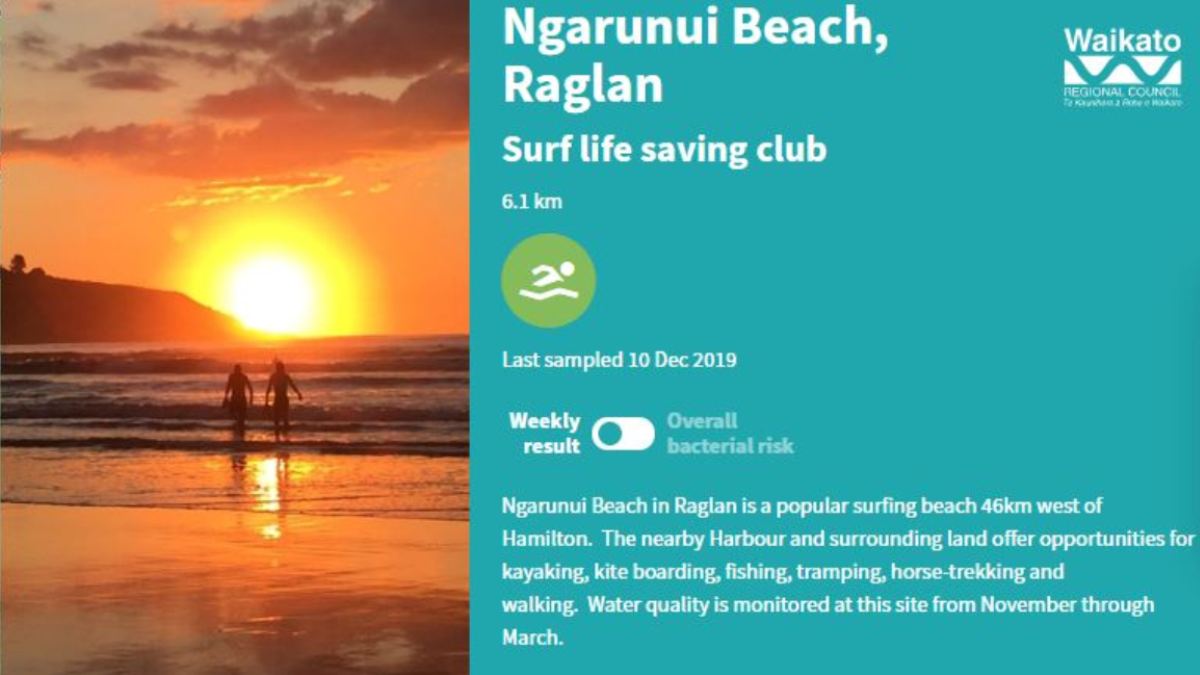Waikato Regional Council news
Heading off to the beach for the Christmas break and want to know if the water quality stacks up for swimming and recreation?
Waikato Regional Council tests the water quality at Ngarunui Beach, Sunset Beach and seven Coromandel Peninsula beaches once a week from November until March, with the latest results available to beach users at waikatoregion.govt.nz/coastalresults and the Land and Water Aotearoa (LAWA) website. Ngarunui Beach
Coastal and marine team leader Michael Townsend says the water quality at Waikato’s beaches is generally quite high, but the weekly results are important to look at because heavy rainfall events can wash contaminants, such as effluent, from the land into the waterways and out to the coast.
“What we tend to find is that the faecal bacterial levels can be quite high after a lot of rain. So while it might be tempting to rush out for a swim the minute the sun is out again, it’s worth knowing that these contaminants may be present in the water for up to two days and we’d recommend caution.
“The number of faecal bacteria present in the water indicates the likelihood of getting sick from the many possible pathogens such as bacteria or viruses.”
If the results are of concern, the regional council works with district councils and the Waikato District Health Board to undertake more testing and to understand if there could be any public health implications.
“So far, each time we’ve done further testing the bacteria levels are back to an acceptable range, but if there was a problem then the DHB will issue a health warning.”
The council uses national guidelines to determine whether the monitoring results show the water is suitable for recreation.The Coromandel beaches monitored are Whitianga, Hot Water Beach, Tairua, Pauanui, Whangamatā, Onemana and Whiritoa, and Sunset Beach (Port Waikato) and Ngārunui on the west coast.
Weekly monitoring gives an understanding of the typical water quality at each location over time, and an overall grade is updated for each location at the end of the sampling season.
This is the fourth consecutive year that the regional council has done coastal water quality monitoring, and it recruits students to help with sample collections.
“It’s important to understand the quality of the water so we can make good decisions on managing our coastal and marine area,” says Dr Townsend.

